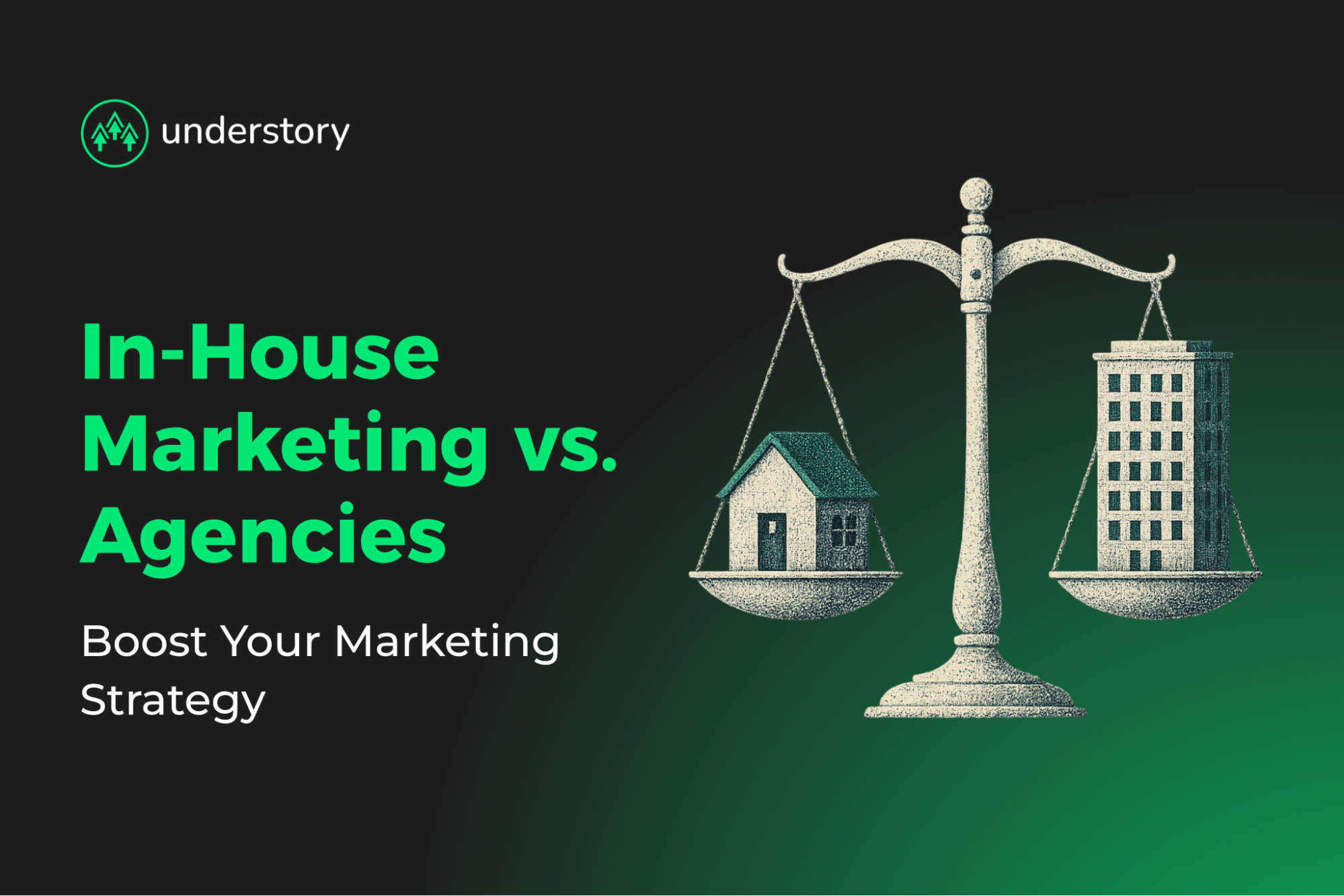

How to Do a Competitor Analysis Pitch Deck

Alex Fine
Author
Published date
11/21/2025
Reading time
5 min
A weak competition slide can cost you investor attention before your second click. In today’s crowded SaaS market, it’s the moment investors judge how well you understand the landscape, what makes you different, and whether you can win.
Most founders either clutter the slide with logos or make broad, unprovable claims. Understory helps SaaS teams avoid both by turning complex positioning into clear, investor-ready narratives through aligned messaging, design, and metrics.
This guide walks you through our proven framework: how to choose the right competitors, what data to highlight, and how to design a slide that communicates advantage at a glance. By the end, you’ll have a polished competitor analysis that inspires investor confidence instead of confusion.
When done right, your competition slide doesn’t just explain the market. It shows exactly why you’re built to lead it.
What a Competition Slide Must Prove
A strong competition slide answers three questions so clearly that investors don’t need to ask them:
Who else solves this problem? Identify direct competitors investors already know and emerging alternatives they should.
Why are we different or better? Expose feature gaps, pricing inefficiencies, or pain points others overlook, and show exactly how you close them.
Why will customers choose us? Back your claims with data that prove your advantage is real and defensible.
Investors read this slide to assess how well you know your market and how precisely you position your product. A clean, data-backed visual builds trust faster than any verbal pitch and a vague one signals risk.
For technical SaaS founders clarity matters most. Anchor your story on these three questions, support each with proof, and your deck shifts the conversation from “Do they understand the market?” to “How fast can they win it?”
Identify the Right Competitors
Choosing the right competitors is where your slide either earns credibility or loses it. The key is to separate direct, indirect, and emerging rivals clearly:
- Direct competitors solve the same problem for the same audience.
- Indirect competitors address the same need through a different approach.
- Emerging competitors are new entrants reshaping the market with innovation or technology.
For instance, in SaaS, Asana and Trello directly compete in project management, while Slack indirectly overlaps through team collaboration. An AI-driven workflow platform would represent an emerging rival changing the competitive dynamic.
Aim to feature five to seven competitors. This is enough to show awareness without overwhelming investors. Each should reinforce your positioning, not clutter it.
Use trusted tools to surface meaningful insights:
- Crunchbase for funding rounds and company profiles.
- SEMrush for share-of-voice and keyword trends.
- SimilarWeb for web traffic and audience overlap.
- G2 or Capterra for user sentiment and feature comparisons.
Each source adds a distinct perspective. For example, funding data reveals momentum, while review sites expose product strengths and weaknesses. Together, they help you spot competitors investors already watch and those they haven’t yet noticed.
Choose High-Impact Comparison Metrics
When your competition slide appears, investors immediately look for proof that you understand where you outperform competitors and how that edge drives revenue. Focus on five metric categories that answer the “why you, why now?” question:
- Product Capabilities: Show what your software does that others can’t. Highlight up to three standout features (like native integrations or AI automation) and back each with documentation or verified user reviews.
- Pricing and Value: Demonstrate a clear cost-to-outcome advantage. Quantify savings, flexible pricing, or total cost of ownership benefits and connect each dollar saved to improved customer margins. Avoid vague “budget-friendly” claims.
- Customer Segment Focus: Clarify your market fit. If your product serves mid-market fintech teams or specific verticals, say so. Segment mapping helps investors see where you win, not just what you build.
- Traction and Growth: Translate differentiation into momentum. Use verifiable data and always anchor them in time (“120% ARR growth over 12 months”).
- Go-To-Market Efficiency: Prove repeatability. Highlight PLG funnels, channel partnerships, or acquisition efficiencies that signal scalable growth.
Filter your potential metrics using three investor lenses:
- Evidence Strength: Is the data verifiable?
- Strategic Relevance: Does it reinforce your positioning?
- Visual Clarity: Can it be understood in five seconds?
Only the top-scoring metrics belong on the slide. Drop vanity stats like social followers or press mentions. This results in a clean, data-backed comparison that signals scalability, margin strength, and defensibility.
Design the Slide: Matrix, Quadrant, Feature Grid
Three visual frameworks consistently drive instant investor comprehension: the 2×2 positioning matrix, feature comparison table, and competitive landscape map. Each serves a distinct purpose in highlighting your SaaS differentiation.
The 2×2 Positioning Matrix
This classic slide plots competitors across two investor-relevant axes, such as feature depth versus ease of deployment. It’s a simple, powerful way to reveal market whitespace and show your SaaS in the most desirable quadrant.
Pro tip: While matrices are persuasive, they simplify reality. Keep backup data ready to validate your axis choices when investors dig deeper.
Feature Comparison Table
Ideal for product-led differentiation, this grid lists must-have capabilities in rows and competitor logos in columns. Use check marks or icons to highlight exclusive advantages, such as deeper integrations or automation capabilities others lack.
Pro tip: Limit comparisons to seven core features to prevent visual overload. Beyond that, tables lose impact and clarity.
Competitive Landscape Map
This approach visualizes competitors by market share (bubble size) and strategic focus (x-axis position). It’s particularly effective for showing traction against larger incumbents, like illustrating how your SaaS already dominates a rapid-growth niche they overlook.
Pro tip: Ensure your market-share data comes from credible sources by linking third-party traffic tools or analyst estimates in your appendix.
Design and Accessibility Principles
Regardless of framework, design discipline determines the slide's credibility and impact:
- Visual Hierarchy: Your company should stand out while competitor logos appear secondary, using a three-color scheme that reserves your brand color for your data point to draw investor focus instantly.
- Typography and Labels: Keep axis and column labels plain and intuitive (say "Annualized Revenue" instead of "ARR $MM") with scalable text at 18pt or larger for legibility across all viewing conditions.
- White Space and Layout: Maintain breathing room around each element to avoid clutter that reads as amateurish or untrustworthy.
- Accessibility Standards: Maintain WCAG-compliant contrast ratios for clarity in bright or dim rooms, and prefer simple icons to ornate illustrations—they scale better and communicate faster.
- Final Validation: Before locking the slide, ensure axes or columns align with metrics investors actually value, your company's data point stands out without exaggeration, competitor visuals are uniform, and your palette stays within four colors with fonts within two families.
Execute with these details, and your slide becomes evidence of strategic clarity, signaling to investors that your team knows how to communicate value as sharply as it delivers it.
Craft the Positioning Narrative
Every effective slide needs a single, memorable positioning statement investors can instantly recall and repeat.
Use a consistent formula that makes value crystal clear:
“Unlike [competitors] who [limitation], we [unique approach] to deliver [key benefit] for [target customers].”
This framework compels precision. It names your rival, exposes their constraint, highlights your differentiated method, and ties it directly to a benefit your buyers value most. The structure also mirrors your visual axes ensuring your narrative and slide reinforce each other.
For example, Airbnb’s early pitch captured this perfectly. Their slides contrasted price and online booking availability against hotels. Their statement read:
“Unlike hotels that lock travelers into rigid pricing and offline bookings, we connect hosts and guests directly, giving travelers affordable stays booked entirely online.”
The tone was professional but firm, acknowledging the competition while clearly positioning Airbnb’s disruptive advantage. Investors immediately saw the market gap the company intended to own.
Apply the pattern to your approach. Suppose you’re pitching automated compliance reporting. Your line might read:
“Unlike legacy GRC suites that bury teams in manual audits, we use continuous monitoring to generate real-time reports, cutting verification time by 80% for cloud-native fintechs.”
Each clause ties back to specific comparison metrics already visualized in your positioning matrix.
Test for clarity. Share the slide and statement with someone outside your niche. After five seconds, ask them to repeat your advantage in their own words.
If they can, your narrative works. If not, simplify. Swap jargon for plain terms, trim excess phrases, and ensure the limitation–approach–benefit pattern remains intact. The benchmark is to have a positioning statement so clear investors can quote it back after the meeting.
Build investor-ready pitch decks with Understory
A clear, data-backed competitor analysis proves you know your market and can defend your edge. When your slide connects strong metrics, clean visuals, and a focused message, it builds instant credibility.
At Understory, we eliminate the coordination overhead of managing separate design agencies and positioning consultants. Our professional creative services include brand workshops for technical positioning, conversion-optimized pitch deck design, and consistent visual identity that supports complex B2B fundraising cycles. Because we coordinate creative with strategic paid media and Clay-powered outbound, your investor deck aligns with the same messaging prospects see across your campaigns.
Schedule a call with Understory today to see how coordinated creative execution can transform your allbound marketing strategy.




